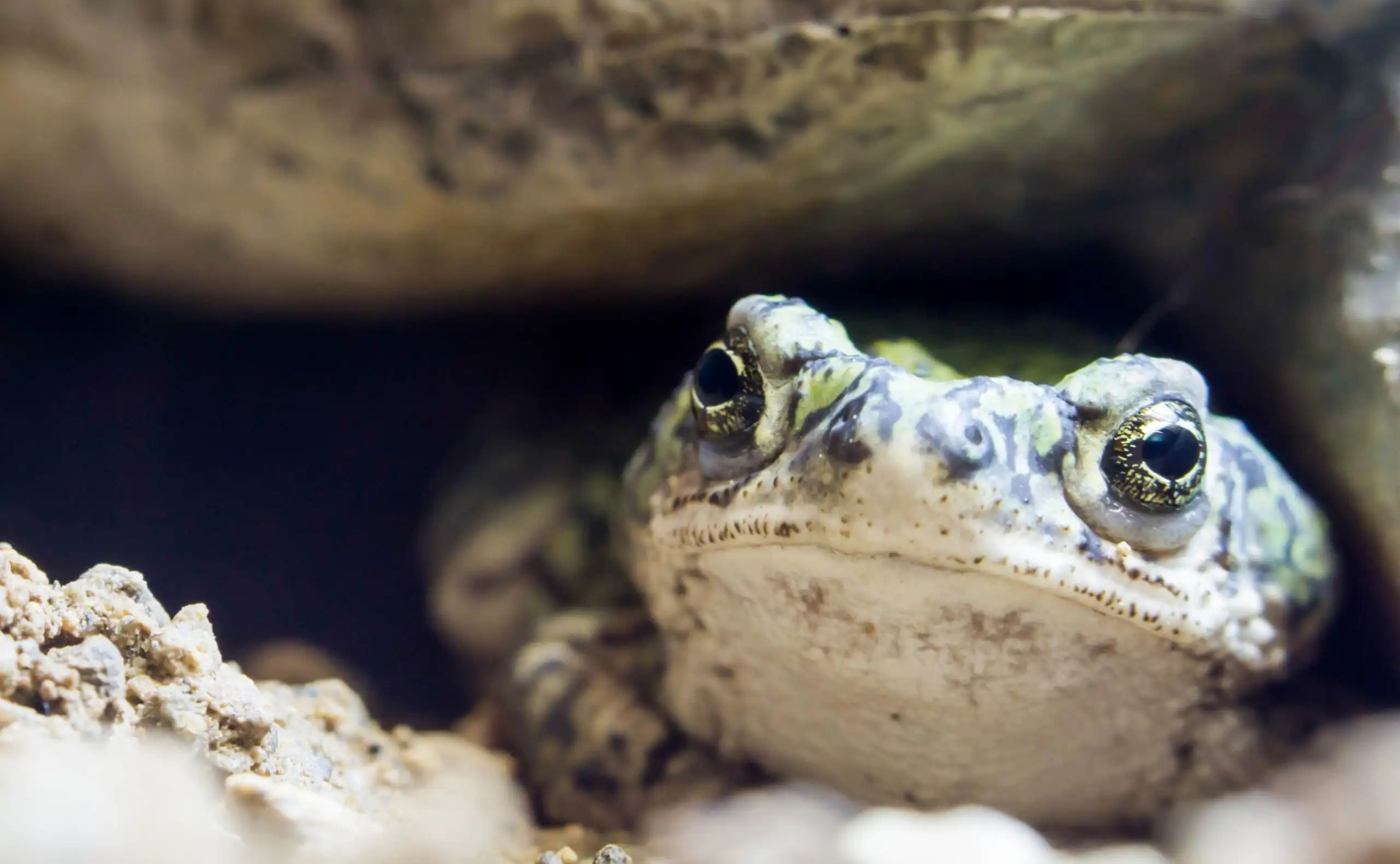As tempting as it may sound, the National Park Service is asking visitors to stop licking the Sonoran desert toad.
Though they may look innocent enough, the agency warns that the amphibian carries a potent toxin that can make people sick if they touch it or get the poison in their mouths.
“As we say with most things you come across in a national park, whether it be a banana slug, unfamiliar mushroom, or a large toad with glowing eyes in the dead of night, please refrain from licking," the agency wrote in a cheeky Facebook post this past week.
But why would anyone want to introduce their taste buds to this creature in the first place? Well, one of the chemicals in its skin, bufotenin, can produce a potent psychedelic drug called 5-MeO-DMT, which causes euphoria and strong auditory hallucinations. And while that may sound appealing to some, it's not actually something you can achieve from simple tongue-to-toad contact.
Here’s what to know about the frog, including how to spot it.
Where can the Sonoran desert toad be found?
They primarily live in northern Mexico and the southwestern United States, including Colorado (hence their other name, the Colorado River toad). Specifically, they’re common in the Sonoran desert, which spans parts of Mexico, Arizona, and California (though this particular species hasn’t been seen in the Golden State since the 1970s).
Since they’re semiaquatic in nature, they tend to hang out both in dry climates and near bodies of water, such as ponds.
How can you spot it?
As one of the largest toads in North America at nearly 7 inches in length, the Sonoran desert toad might not be hard to miss. Adults have a greenish-gray body with small brownish or orange spots and a cream-colored belly. Plus, in typical toad fashion, you might also notice some warts.
But if you don’t see it with your own eyes, you might hear what the NPS describes as a distinctive “weak, low-pitched toot.”
Are they really poisonous?
These toads secrete an extremely toxic chemical from several glands, which the Aquarium of the Pacific says has a white and milky appearance — and can make humans extremely sick. But pet owners should be especially wary: The toxins are strong enough to kill full-grown dogs, according to the Arizona-Sonora Desert Museum.
Why are they being used as recreational drugs?
Believe it or not, these toxic toads are in high demand — so much so that the species is even considered threatened in New Mexico, where it’s often targeted for recreational drug use. But most people who engage in this kind of toad-induced trip don’t get it by licking them: Stroking under the toad’s chin releases a substance that’s turned into crystals and smoked in a pipe. The resulting psychedelic experience can last anywhere from 15 to 30 minutes, according to The New York Times.
But even though the substance has been embraced by celebrities and therapeutic gurus alike, 5-MeO-DMT is still illegal in the U.S., where it’s classified as a Schedule 1 controlled substance, alongside heroin.
So if you see these toads, it's best to let them hop along on their merry way.









